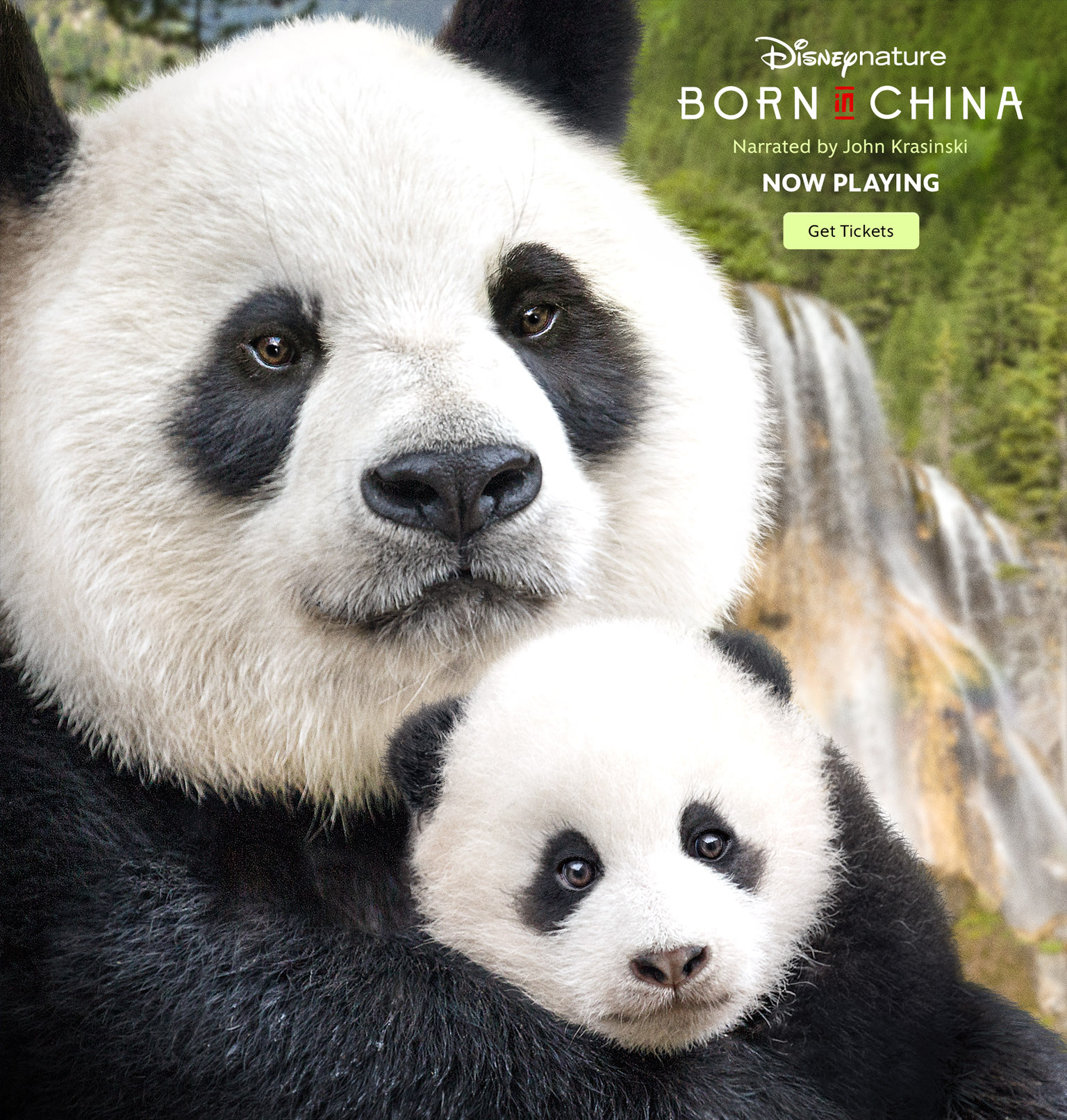“Born in China” Moviegoers Help Protect Wild Pandas and Snow Leopards
Thanks opening-week moviegoers, Disneynature and World Wildlife Fund (WWF) are celebrating the conservation work supported by the theatrical release of “Born in China” across North America and in China last August. In theaters now, the movie features wildly intimate moments in the lives of three animal families: a mother panda bear who has a hard time letting go, a golden monkey with an attention-stealing new sister, and a mother snow leopard facing incredible odds.
Based on opening-week attendance (April 21-27, 2017), Disneynature, through the Disney Conservation Fund, is making a contribution to WWF to help protect wild pandas and snow leopards.

“Our filmmakers spent nearly three years battling tough terrain, frigid temps and impossible-to-find snow leopards,” said Paul Baribault, vice president of Disneynature. “China and its charming animal inhabitants have made an incredible impression on all of us. We are grateful that so many people went to the movies last week to see ‘Born in China’ and help protect some of the planet’s most remarkable wildlife.”
“Some of Earth’s most stunning landscapes and wildlife call China home,” said Terry Macko, chief marketing officer of WWF in the United States. “By immersing viewers in the natural splendor that our world has to offer, ‘Born in China’ is a powerful reminder that all nations—and all peoples—have a stake in protecting it.”
A portion of opening-week ticket sales will be dedicated to WWF’s conservation programs in China that protect species featured in “Born in China” and their habitats. Efforts, made possible by the Chinese government and WWF, include improving habitat corridors, increasing the wild panda population, enhancing conservation stewardship to local communities, and establishing new snow leopard conservation programs.
- Safe Travels — The three key places at the center of these conservation efforts, Middle East Qinling, Northern Minshan, and Middle Qionglai, include a patchwork of protected areas across central China. To help pandas and other species survive and thrive, WWF will protect 495,000 acres of forest in these three landscapes to establish and restore key corridors, improve the management of existing protected areas, and connect these areas through conserving the habitat between protected areas.
- Baby Boom — WWF aims to increase the wild panda population through a comprehensive plan for managing habitat corridors and nearby protected areas. To achieve this, more than 150 wild pandas (or 8 percent of the existing wild population) will be reunited with the larger community across a broader landscape to increase their chances for survival and likelihood of population increases.
- Teamwork — WWF will engage the true stewards of nature, the local communities of up to 5,000 individuals who live around these protected areas. By developing models for community-owned forests, education on community led-conservation efforts, improving livelihoods and efficient rural energy use, WWF hopes that these local communities will continue to steward these critical habitats well into the future.
- Snow Leopard Work — WWF will establish new and innovative snow leopard conservation programs starting with hiring staff and conducting research to establish a baseline status of snow leopards in the northern regions of their habitat, including current population, habitat, main threats, and local socio-economic context. This research will inform a refined strategy and action plan for WWF’s on-the-ground work in China protecting this magnificent species for years to come.
Disneynature’s commitment to conservation is a key pillar of the label and the films empower the audience to help make a difference. Through donations tied to opening-week attendance of its films, Disneynature has contributed to a host of conservation initiatives. Efforts include planting three million trees in Brazil’s Atlantic Forest, established 40,000 acres of marine protected area in The Bahamas, protected 65,000 acres of savanna in Kenya, protected nearly 130,000 acres of wild chimpanzee habitat, cared for chimpanzees and educated 60,000 school children about chimpanzee conservation. Additionally, efforts have funded research and restoration grants in U.S. National Parks, supporting conservation projects spanning 400,000 acres of parkland and protecting over 75 species of animals and plants, and helped protect monkeys and other endangered species in their natural habitats across Indonesia, Cambodia and Sri Lanka.


